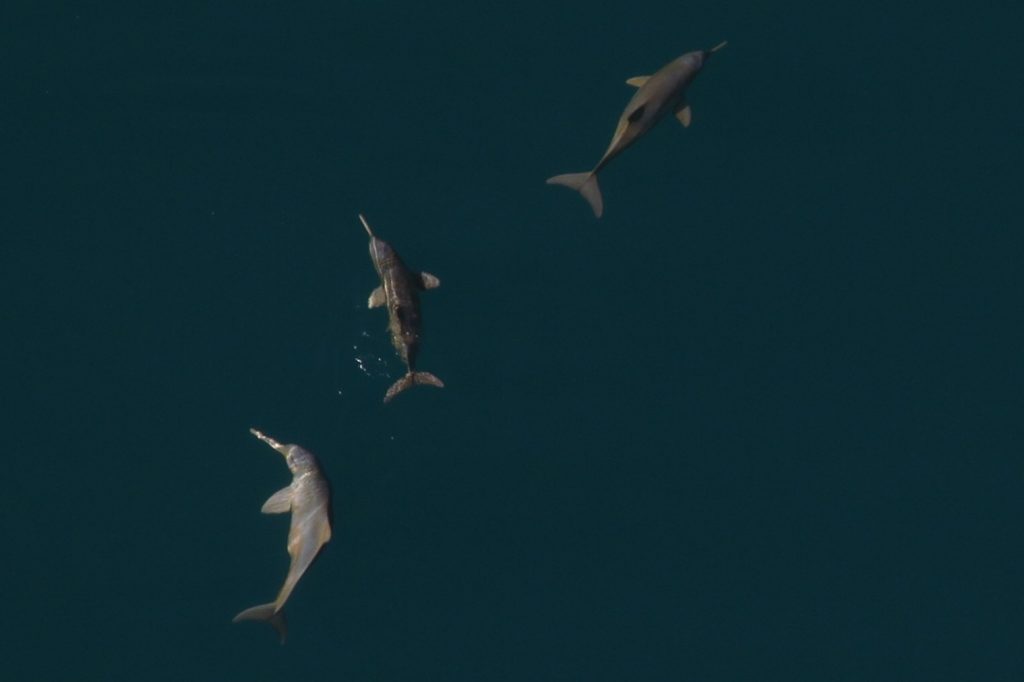The Franciscana is the most endangered dolphin in South America. Understanding where the species is distributed and whether there are preferential areas of use is critical to its conservation. Likewise, understanding the size of their populations, that is, how many Franciscanas are still left in our seas, is key for the establishment of conservation plans.
For being a species that is hardly seen from motor boats, aerial platforms are considered ideal for population surveys. This multi-institutional and international Program, led by researchers from GEMARS and partner institutions, has been using airplanes and helicopters since 2004 to investigate the entire south and southeast coast of Brazil, mapping the occurrence of Franciscanas and other cetaceans. By the end of 2020, fifteen aerial surveys were conducted.
Aerial monitoring has emphasized, for example, the serious threat of extinction that Franciscanas from Espirito Santo and northern Rio de Janeiro have, due to their very small populations. At the same time, research has managed to identify critical areas that are home to more than 50% of each of these populations.
Assessment work on this endangered species should be contiuous. Long-term monitoring is essential for managers and conservationists to be able to understand whether protection measures are effective or need to be modified, and whether new threats arise.
Correction factors
One of the main advances in Franciscana's abundance estimates under this Program has been the calculation of correction factors for the counts of animals seen from the plane. To correct animals that are lost due to various reasons, the team of researchers has conducted several experiments applying simultaneous monitoring of planes and boats, as well as using helicopters to understand how long a dolphin is available to be counted by an observer.




